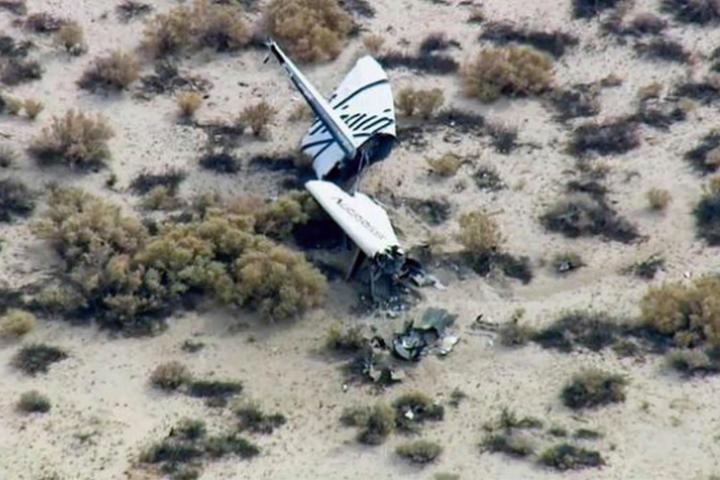
An unnamed source close to the investigation told the Wall Street Journal over the weekend that a “violent structural failure rather than an engine explosion” could be the likely reason the vehicle crashed.
The source pointed out that the National Transportation Safety Board’s (NTSB) investigation has only just started and therefore it’s likely to be some considerable time before the cause of the accident can be confidently identified. However, the idea that structural failure may be to blame appears to be a new line of inquiry for investigators after initial reports focused heavily on the testing of a new type of performance-boosting rocket fuel that some believed could have led to an explosion on board SpaceShipTwo shortly after it was released at 45,000 feet by its WhiteKnightTwo transporter aircraft.
According to the Journal, “preliminary data” received by the NTSB, which includes the news that SpaceShipTwo’s fuel tanks and engine were found “largely intact,” has caused it to shift the focus of its investigation to the powerful aerodynamic forces acting on the spacecraft, which could have caused it to break up in flight.
Speaking to reporters the day after the accident, Virgin Galactic founder Richard Branson suggested he couldn’t be sure if his ambitious space tourism project would continue.
“We owe it to our test pilots to find out what went wrong,” Branson said. “And once we find out what went wrong, if we can overcome it, we will make absolutely certain that the dream lives on.”
Virgin Galactic’s commercial space tourism service has for some time been selling seats for future flights on its six-person vehicle. Tom Hanks, Justin Bieber, Ashton Kutcher and Lady Gaga are among those who’ve forked out as much as $250,000 for a ticket in the hope of one day taking a ride into space. However, following last Friday’s crash, it’s far from clear when, if ever, Virgin Galactic will be in a position to launch its first commercial flight.
[UPDATE] The Journal’s source looks to have been solid – NTSB chairman Christopher Hart said later on Sunday his investigation team had discovered that just prior to the accident, an improper co-pilot command occurred which deployed SpaceShipTwo’s tail surfaces prematurely. Just two seconds later, according to Hart, “we saw disintegration.” Despite the revelation, the chairman insisted there are still “months and months” of work to be done to determine the precise cause of the crash.
[Source: WSJ]


